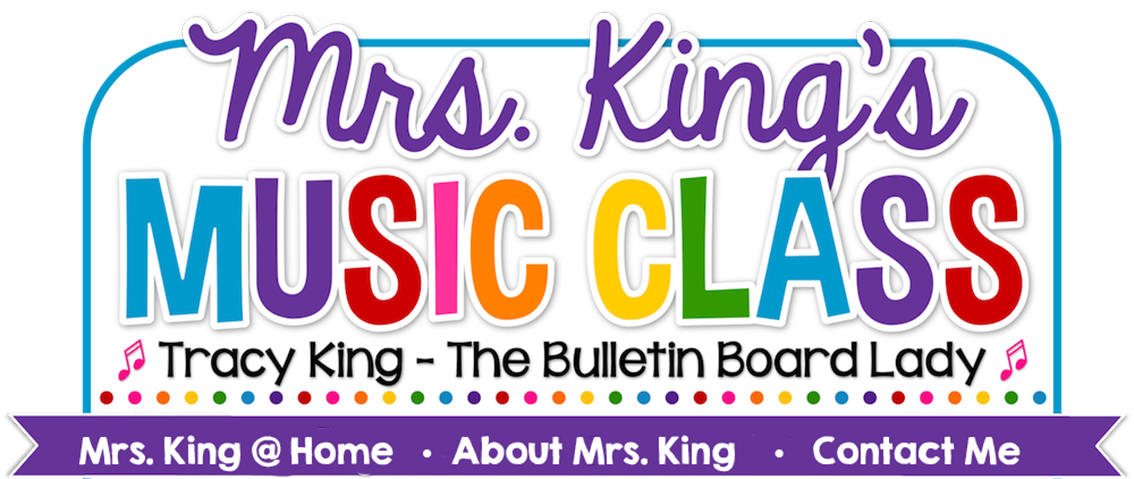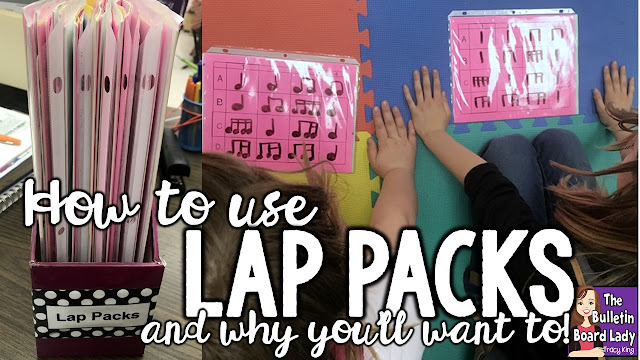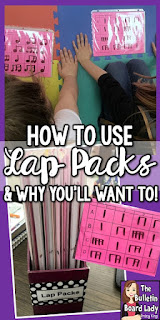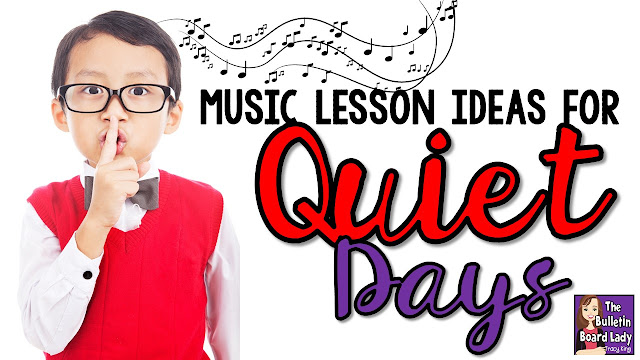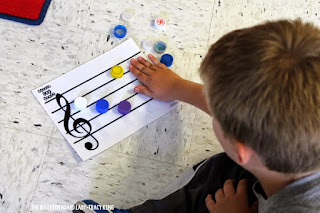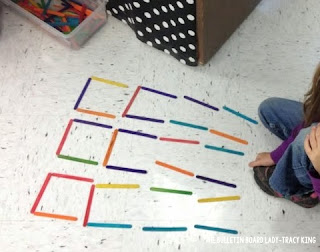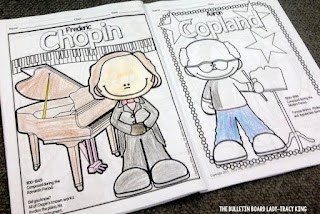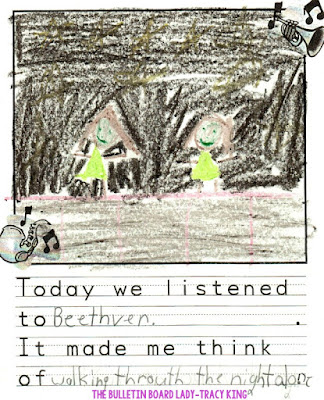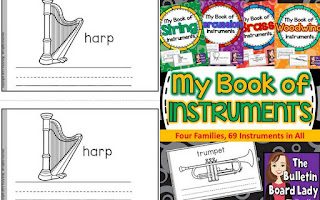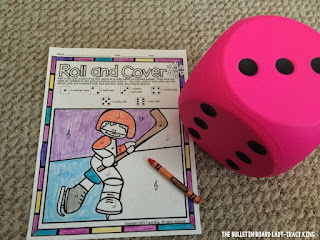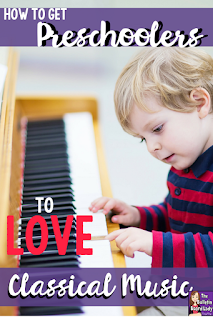I am a a big fan of writing in my music classes. You'll probably notice as you browse through this blog that I use many different strategies for incorporating writing. I use exit tickets, oral writing, group paragraphs, writing prompts and more. Most of these tools are for writing about music, not actually writing notation. Lap packs are my go-to tool for writing notation in my classroom.
Lap Packs are my name for page protectors stuffed full of templates. I have 3 or 4 sheets per page protector and most of them have a template on front and back. I use a piece of cardstock or two when I am making the copies so the lap packs are pretty sturdy and can just be used on a lap. No clipboard or desk needed!
When I first started using lap packs, I paid extra for page protectors that were described as "high quality" and "extra thick". Yeah....turns out that the cheap ones work just as well! Some years I switch out 2 or 3 page protectors and other years I switch out 30 or 40. It really depends on my students, how often I leave lap pack activities for my sub to use and how diligent we are when erasing them.
I use regular dry erase markers and we erase with a piece of a paper towel. I get a pack of paper towels from the custodians and then cut them in thirds. We don't erase very much so the small piece of paper towel is more than enough. Someday I'd like to buy something else to use as an eraser, but until then this free option works well.
I store my lap packs in a magazine box. I encourage students to put them back in the box with the open side on top. When others pull out a lap pack with the open side on top they don't lose all of the pages on their way to their seat.
Most of the sheets in my lap packs have two sides. This just makes it easier for me when copying and it also makes it easier to have students change the sheets that are on top.
On one sheet I have a large staff (no clef). We use this with bottle caps for learning pitch names and melodic dictation. I also use this side to introduce line notes and space notes with younger grades and for composing simple ostinatos. The back side of this sheet contains 2 smaller staves.
The green sheet contains a set of body percussion staves. I like to use different colored pages because it helps students find the sheet they need and switch them quickly. The back of this page (pictured below) contains a graphic organizer. This graphic organizer is great for instruments of the orchestra, SATB, identifying characteristics of a musical and more.
Another page (copied on pink paper) contains 4 beat boxes. Okay, you can call them whatever you want, but I call them beat boxes because each box represents one beat. In the picture below you'll see that beneath the beat boxes there are two lines. I use this sheet for composition projects using sol/mi or sol/mi/la. Students draw a quarter note or barred eighth notes in one of the beat boxes and then draw note heads on the lines to indicate sol or mi. Students are immediately successful and there are many activities you can do with their compositions.
On the flip side of the pink page is Martha Stanley's Mighty Music Grid. I use this grid for SO many things. My favorite activity for this grid is rhythmic dictation. For Kindergarten classes we practice writing quarter notes and quarter rests and clapping our patterns with a friend. In 1st grade we create sound songs by drawing symbols for various sounds and body percussion in each block. In other classes we take rhythmic dictation just like you did in college. I clap a rhythm, they echo and write it down. Students love the challenge of matching my pattern and become quite skilled at deciphering rhythm patterns.
I also include a blank sheet in each lap pack. This page has been used with my youngest students to illustrate what they have heard. With older students we have created vocal exploration patterns, choreography, graphic organizers and flow charts and listening maps.
The picture below was an example from a 5th grader. Okay...this wasn't just an average student. This student went above and beyond and created a pretty amazing listening map for the overture from William Tell. I'm not exactly sure what the question marks were for, but they worked well with the song.
If you are looking for a way to incorporate any of these activities but hate getting bogged down with shuffling papers and stacks of pages to grade, I would definitely recommend using lap packs and dry erase markers. Instead of grading papers, I walk around the classroom and make notes on my attendance sheet and record points later. This makes assessment easy for me and stress free for students.
So have I convinced you of the awesomeness of lap packs? Try them out! I put together a few of my favorite pages for you to try in your classroom. Follow THIS LINK to download them. Let me know how lap packs are working for you in the comments!
Like these ideas? PIN THEM for later!

